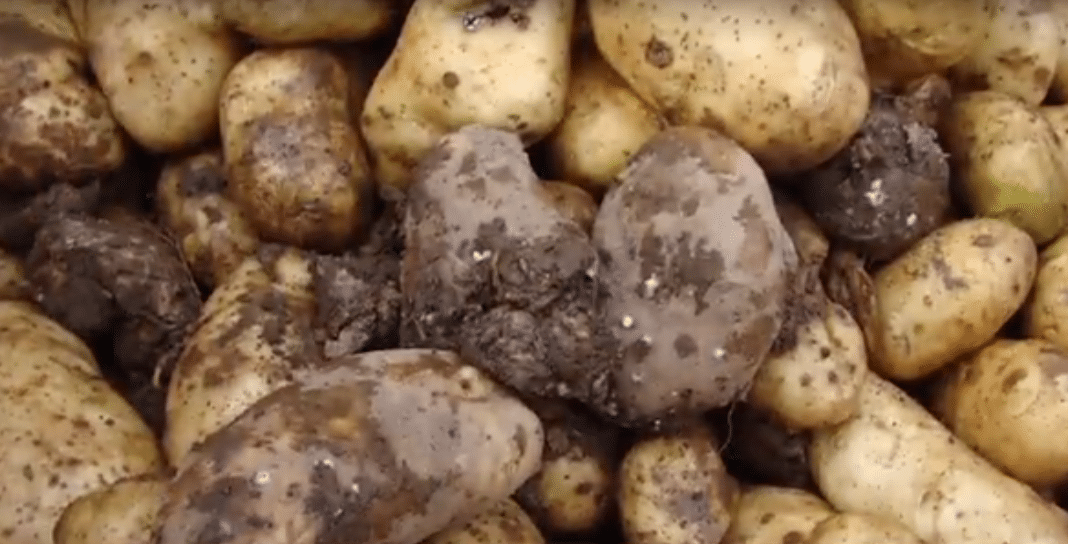Syngenta Canada Inc. announces the registration of Revus fungicide as a potato seed treatment for the suppression of pink rot and control of seed-borne late blight in potatoes.
Pink rot is a soil-borne disease caused by the pathogen Phytophthora erythroseptica that thrives in wet, poorly drained soils. Infection typically takes place pre-harvest, as the pathogen enters tubers through the stem end and lenticels.
Tubers infected with pink rot will often decay during harvest and handling, which allows the pathogen to spread quickly from infected tubers to healthy tubers while in storage.
“Every field has the potential for pink rot,” says Brady Code, eastern technical lead with Syngenta Canada. “It takes a very small number of infected tubers going over harvest equipment or getting by on the belt to put an entire season of work in jeopardy, and leave growers with far fewer healthy potatoes to ship.”
Revus contains the active ingredient mandipropamid (Group 40), and works by protecting the daughter tubers from becoming infected with pink rot.
“Growers can use Revus as part of an integrated approach to target fields where they’ve had pink rot issues in previous seasons, on their more susceptible varieties, and in tandem with other in-furrow and post-harvest fungicides,” explains Shaun Vey, Seedcare and inoculants product lead with Syngenta Canada.
Vey adds Revus also provides control of seed-borne late blight (Phytophthora infestans). Syngenta research demonstrates that potatoes treated with Revus for seed-borne late blight have nearly perfect emergence, while untreated seed potatoes infected with late blight have a 20 to 30 per cent reduction in emergence.
“Seed-borne late blight can have a big impact on emergence over time,” explains Vey. “When used as a seed treatment, Revus can help prevent seed piece decay and the spread of disease spores from seed piece to seed piece.”
Revus is applied at 5.9-11.8 mL per cwt of seed (13-26 mL/100 kg of seed).
Following a seed treatment application of Revus fungicide, the first foliar fungicide application should be a product that does not contain a Group 40 active ingredient.
Maximum residue limits (MRLs) for mandipropamid have been established for markets including Canada, the United States, Japan and South Korea, in support of the seed treatment use pattern.











